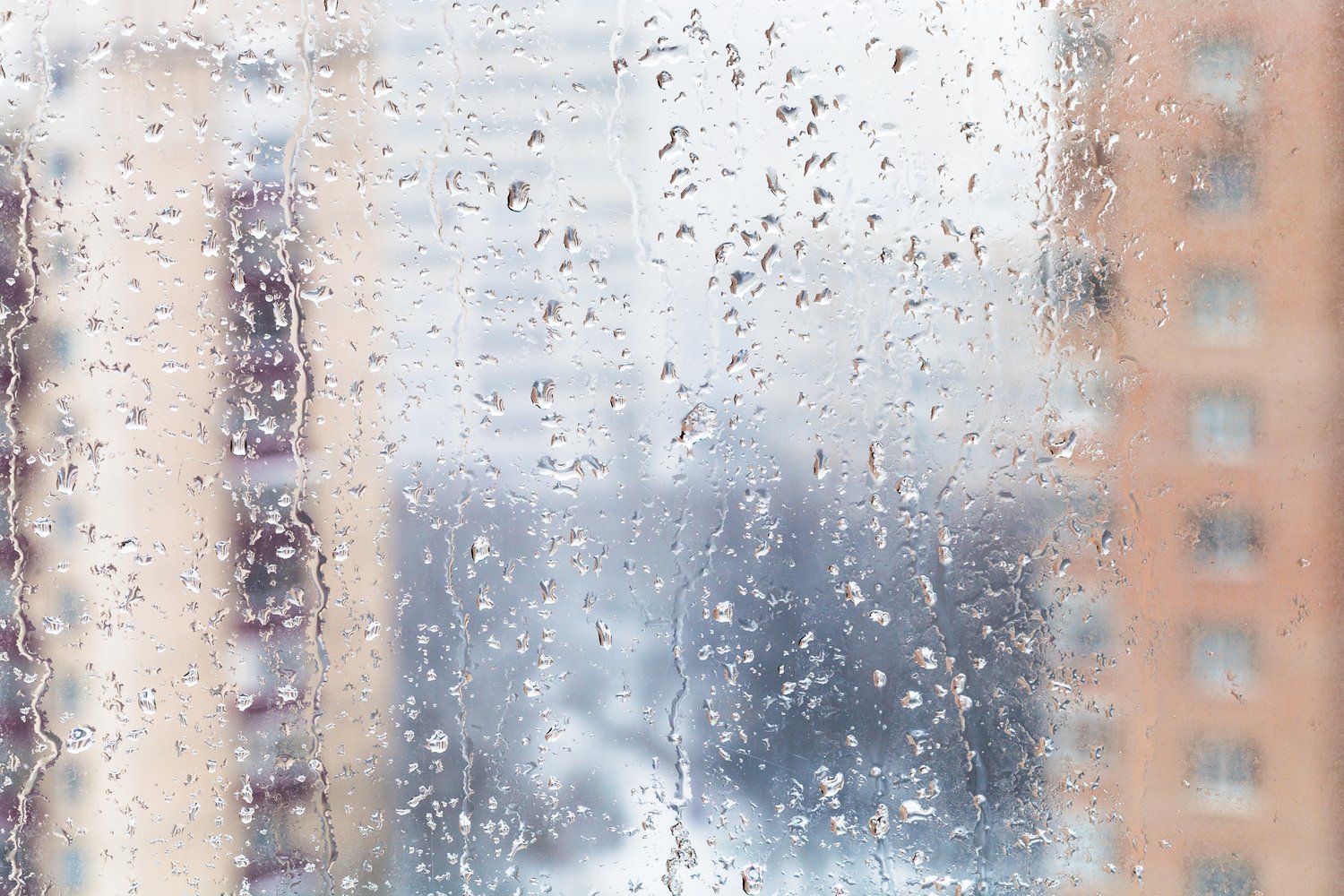Condensation on windows is a common household issue that many homeowners face, particularly during seasonal transitions or in homes with significant indoor-outdoor temperature differences. This moisture buildup not only obstructs your view but can potentially lead to more serious problems like mold growth, wood rot, and damage to surrounding walls and window frames. In this article, we’ll explore the science behind window condensation causes, identify the various types you might encounter, and provide practical solutions to stop condensation on windows through effective humidity control methods.
Why Does Condensation Form on Windows?
Window condensation occurs due to a simple scientific principle: when warm, moisture-laden air meets a cold surface, the air cools and can no longer hold as much moisture. This excess moisture then condenses into water droplets on the cool surface. Your windows, particularly single-pane varieties or those with poor insulation, often serve as the coldest surfaces in your home during winter months, making them prime spots for condensation to form.
Indoor condensation typically appears during colder months when heated indoor air carries moisture that condenses upon contact with cold window surfaces. Conversely, exterior condensation usually occurs during warmer seasons when outdoor humidity condenses on windows cooled by air conditioning. Understanding these patterns helps identify the right approach to address window condensation causes in your specific situation.
Daily activities contribute significantly to indoor humidity levels. Cooking, showering, drying clothes indoors, and even breathing add moisture to your home’s air. In an average household, these routine activities can add up to 18 gallons of moisture to the air each day! Without proper ventilation, this moisture becomes trapped indoors and eventually finds its way to your window surfaces.
Interior vs. Exterior Condensation
Interior condensation forms on the inside surface of windows when indoor humidity levels are high relative to outdoor temperatures. This is the most common type homeowners struggle with during winter months. If left unaddressed, persistent interior condensation can damage window frames, sills, and surrounding drywall, potentially leading to mold growth and structural issues.
Exterior condensation appears on the outside surface of windows, typically during summer mornings when outdoor humidity is high and the glass has cooled overnight. While annoying, exterior condensation actually indicates your windows are energy-efficient, as it means they’re preventing indoor cooling from escaping. This type of condensation usually disappears as the day warms up and rarely causes damage.
As experts at AskHomey explain, understanding which type of condensation you’re dealing with is crucial for implementing the right solution to stop condensation on windows effectively.
Solutions for Interior Window Condensation
Controlling indoor humidity is the most effective approach to prevent interior window condensation. Ideal indoor humidity should be between 30-50% during winter months. You can monitor this using an inexpensive hygrometer available at most hardware stores. When humidity exceeds these levels, condensation becomes more likely.
Improving ventilation plays a critical role in humidity control for windows. Always use exhaust fans when cooking or showering, and allow them to run for 15-20 minutes afterward to remove excess moisture. Consider installing timed fans that automatically run for predetermined periods. For persistent issues, whole-house ventilation systems might be worth the investment.
Weather-stripping and window insulation kits can create an additional barrier between cold glass and warm indoor air. These temporary solutions work by adding an insulating layer that keeps the window surface warmer, reducing the likelihood of condensation forming. While these aren’t permanent fixes, they’re cost-effective options for immediate relief.
For persistent problems, upgrading to double or triple-pane windows with advanced thermal breaks and insulating gas fills between panes provides a long-term solution. While this represents a significant investment, energy-efficient windows not only reduce condensation but also lower heating and cooling costs year-round.
Addressing Exterior Window Condensation
Exterior condensation is generally harmless and temporary, typically dissipating as temperatures rise throughout the day. If it’s particularly bothersome, running air conditioning less intensely can reduce the temperature differential that causes it.
Applying water repellent products designed for glass can make exterior condensation less visible by causing water to sheet rather than form droplets. These products don’t prevent condensation entirely but make it less noticeable and quicker to evaporate.
Dehumidification Strategies
For homes with chronic humidity issues, dedicated dehumidifiers offer targeted humidity control for windows and other surfaces. Portable units work well for problem areas, while whole-house dehumidifiers integrated with HVAC systems provide comprehensive moisture management throughout your home.
Proper air circulation prevents moisture from settling on window surfaces. Ceiling fans, even on low settings, keep air moving and reduce the likelihood of condensation forming. During winter, avoid placing furniture directly in front of windows as this can restrict airflow and create condensation pockets.
Understanding and addressing window condensation causes requires a multi-faceted approach focused on humidity control and improved insulation. With these practical solutions, you can maintain clear views and protect your home from moisture-related damage year-round.
For more tips and to connect with reliable home service professionals, follow AskHomey on Facebook and Instagram.



